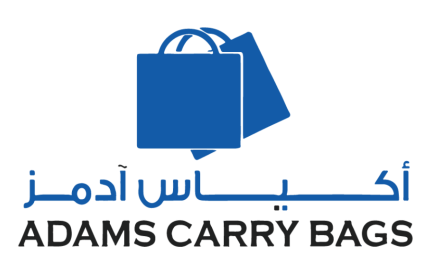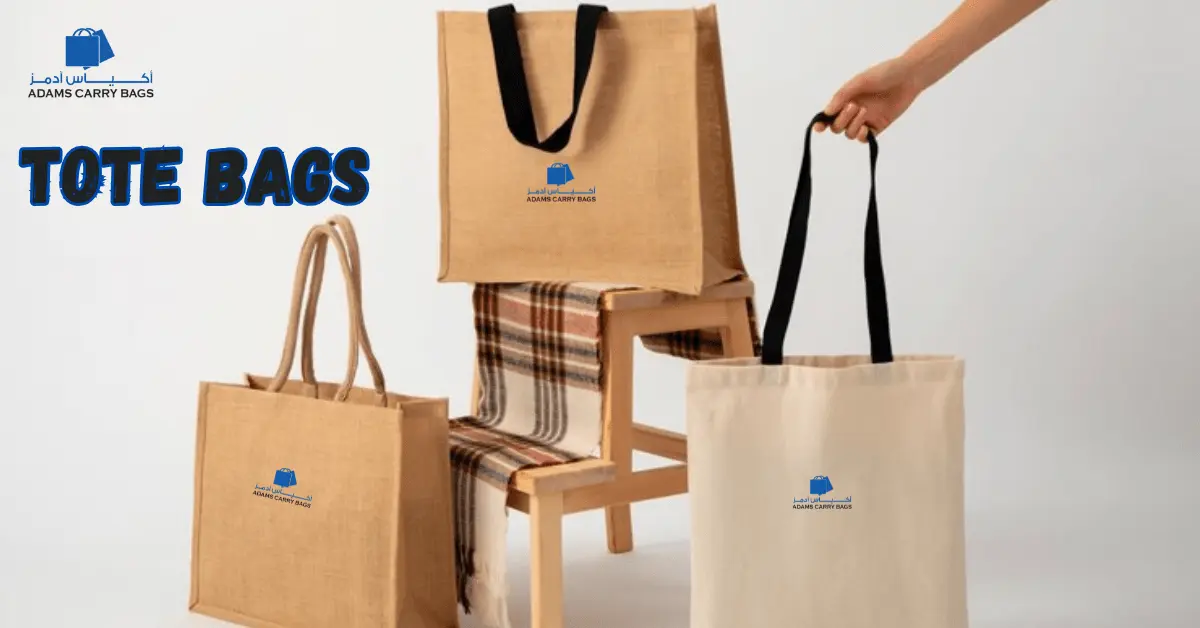
A silent revolution has been underway in the world of shopping, and it revolves around one simple yet versatile accessory: Tote Bags. These sturdy carriers have emerged as the go-to option for environmentally conscious consumers, replacing traditional plastic bags with a sustainable alternative. Among them, non-woven grocery bags have particularly stood out for their durability, innovation, and eco-friendliness. In this comprehensive guide, we delve into the reasons behind the soaring popularity of tote bags, with a special focus on non-woven varieties. Join us as we uncover why tote bags are taking the shopping world by storm.
The Evolution of Tote Bags
Tote bags have a rich and multifaceted history that spans over a century, evolving from humble beginnings into indispensable accessories for modern life. In the early 20th century, tote bags emerged as practical solutions to the logistical challenges faced by sailors, laborers, and workers across various industries. Made from durable materials like canvas or heavy-duty fabrics, these early tote bags were valued for their strength and reliability, capable of carrying heavy loads and enduring harsh conditions at sea or on land.
As industrialization and urbanization reshaped society, tote bags found new applications beyond their utilitarian origins. With the rise of consumer culture and the advent of mass production, tote bags began to transition from functional tools to fashionable accessories. This transformation was fueled by changing social norms, technological advancements, and shifts in consumer behavior.
By the mid-20th century, tote bags had gained traction as versatile accessories with broad appeal. Their simple yet adaptable design made them popular among a diverse range of consumers, from students and homemakers to professionals and travelers. Tote bags became synonymous with practicality, offering ample storage space, comfortable carrying handles, and easy accessibility for everyday essentials.
The latter half of the century witnessed a surge in the popularity of Tote Bags as fashion accessories, driven by cultural movements, artistic expression, and changing aesthetic preferences. Designers and fashion houses began incorporating tote bags into their collections, experimenting with innovative materials, bold colors, and avant-garde designs. Tote bags became more than just functional carriers—they became expressions of personal style, status symbols, and statements of individuality.
The 1960s and 1970s saw tote bags emerge as symbols of counterculture and social activism, adorned with political slogans, peace signs, and psychedelic artwork. Tote bags became vehicles for social commentary and expressions of solidarity, reflecting the turbulent zeitgeist of the era.
In subsequent decades, tote bags continued to evolve in response to shifting consumer tastes and market trends. From eco-friendly materials and sustainable production practices to high-tech features and customizable options, tote bags adapted to meet the diverse needs and preferences of modern consumers.
Today, tote bags occupy a prominent place in the fashion landscape, beloved for their versatility, functionality, and timeless appeal. Whether used for grocery shopping, gym workouts, beach outings, or daily commutes, tote bags remain indispensable companions for individuals seeking style, convenience, and sustainability in their everyday lives
The Environmental Impact of Plastic Bags
The widespread adoption of single-use plastic bags in the mid-20th century represented a significant shift in consumer behavior and shopping practices. Initially hailed as a convenient and inexpensive solution for carrying goods, plastic bags quickly became ubiquitous in retail environments around the world. However, their widespread use came at a considerable cost to the environment.
Plastic bags, made from non-biodegradable materials such as polyethylene, polypropylene, or polyvinyl chloride (PVC), posed a myriad of environmental challenges. Their lightweight and flimsy nature meant that they were easily carried by the wind, contributing to litter and pollution in urban and natural landscapes alike. Plastic bags littered streets, parks, and waterways, creating eyesores and hazards for wildlife.
Furthermore, the production, distribution, and disposal of plastic bags exacted a heavy toll on natural resources and ecosystems. The extraction of fossil fuels required to manufacture plastic bags contributed to carbon emissions and climate change, exacerbating environmental degradation on a global scale. Additionally, the improper disposal of plastic bags led to the accumulation of plastic waste in landfills, where they could take hundreds of years to decompose fully.
Perhaps most alarmingly, plastic bags posed a grave threat to marine life and aquatic ecosystems. Discarded plastic bags often found their way into rivers, lakes, and oceans, where they posed entanglement risks for marine animals and seabirds. Moreover, plastic bags could be mistaken for food by marine organisms, leading to ingestion and potential harm or death.
As public awareness of the environmental impact of plastic bags grew, consumers and policymakers alike began to seek out alternative options that were both practical and eco-friendly. This shift in consumer behavior marked a turning point in the fight against plastic pollution and served as a catalyst for innovation in the design and production of sustainable packaging solutions.
The Rise of Reusable Bags
Amid growing concerns about plastic pollution, reusable bags, including tote bags, began to gain traction as a more sustainable alternative to single-use plastic bags. Tote bags, in particular, gained popularity due to their durability, versatility, and reusability. Unlike flimsy plastic bags that tear easily and contribute to environmental degradation, tote bags can withstand repeated use, making them a practical choice for eco-conscious consumers.
Non-Woven Grocery Bags: A Game-Changer
While traditional tote bags were typically made from woven fabrics like canvas or cotton, non-woven grocery bags introduced a new dimension to the market. Non-woven bags are made from synthetic or natural fibers that are bonded together using heat, pressure, or chemicals. This innovative manufacturing process results in a lightweight yet durable material that is ideal for carrying groceries and other items.
The Innovation of Non-Woven Grocery Bags
While traditional tote bags have long been crafted from woven fabrics such as canvas or cotton, the introduction of non-woven grocery bags represented a significant leap forward in bag design and functionality. Unlike their woven counterparts, non-woven bags are manufactured using a cutting-edge process that involves bonding together synthetic or natural fibers without the need for weaving.
Innovative Manufacturing Process
Non-woven bags are created through a process known as non-woven fabric production, which typically involves three main steps: web formation, web bonding, and finishing treatments. During web formation, fibers are laid out in a random orientation to form a loose web or mat. Next, the fibers are bonded together using heat, pressure, or chemical adhesives, resulting in a cohesive and durable material. Finally, finishing treatments such as calendaring or coating may be applied to enhance the strength, texture, or appearance of the fabric.
Ideal for Carrying Groceries and More
Non-woven grocery bags are specifically designed to excel in carrying heavy loads, making them an ideal choice for trips to the grocery store or farmers’ market. Their sturdy construction and spacious interiors allow for the safe transport of fresh produce, canned goods, and other essentials, while their lightweight design ensures comfort and ease of use for shoppers of all ages.
Versatility and Customization
Non-woven grocery bags offer versatility and customization options that traditional tote bags may lack. Non-woven fabrics can be easily printed with logos, designs, or promotional messages, making them a popular choice for retailers and businesses looking to enhance their brand visibility. Moreover, non-woven bags come in a variety of colors, sizes, and styles, allowing consumers to choose the perfect bag to suit their needs and preferences.
Key Features of Non-Woven Grocery Bags
Non-woven grocery bags offer several advantages over traditional woven bags. Firstly, they are more affordable to produce, making them a cost-effective option for retailers and consumers alike. Additionally, non-woven bags are water-resistant, making them suitable for carrying perishable items such as fruits and vegetables. Moreover, non-woven bags are customizable, allowing retailers to print logos, slogans, or designs on them for promotional purposes.
The Environmental Benefits of Non-Woven Bags
One of the primary reasons for the growing popularity of non-woven grocery bags is their eco-friendly design. Unlike single-use plastic bags, which take hundreds of years to decompose and pose a significant threat to marine life, non-woven bags can be reused multiple times, reducing the demand for disposable plastics. By choosing non-woven bags over plastic bags, consumers can significantly reduce their environmental footprint and contribute to a cleaner, healthier planet.
Environmental Benefits of Non-Woven Grocery Bags
Non-woven grocery bags offer a multitude of environmental benefits that make them a preferred choice for eco-conscious consumers seeking to minimize their impact on the planet. Beyond their durability and reusability, non-woven bags play a crucial role in reducing plastic pollution, conserving natural resources, and promoting sustainability.
Reduction of Plastic Pollution
The most immediate and tangible benefit of non-woven grocery bags is their ability to reduce plastic pollution. Single-use plastic bags are a major contributor to environmental degradation, with millions of bags ending up in landfills, waterways, and oceans each year. These bags can take hundreds of years to decompose, releasing harmful chemicals and microplastics into the environment in the process. By opting for reusable non-woven bags, consumers can significantly decrease their reliance on disposable plastics and mitigate the harmful effects of plastic pollution on ecosystems and wildlife.
Conservation of Natural Resources
Reducing plastic waste, non-woven grocery bags help conserve natural resources by minimizing the need for raw materials and energy-intensive manufacturing processes. Unlike plastic bags, which are derived from fossil fuels and contribute to greenhouse gas emissions, non-woven bags can be made from recycled materials or sustainable fibers such as bamboo, jute, or hemp. By choosing non-woven bags over plastic bags, consumers can support sustainable resource management practices and reduce their carbon footprint.
Tote Bags, and especially non-woven grocery bags, have emerged as sustainable alternatives to traditional plastic bags, offering durability, innovation, and eco-friendliness. As consumers become increasingly aware of the environmental impact of their choices, tote bags have become a symbol of conscientious shopping habits. By embracing tote bags, particularly non-woven varieties, consumers can play a vital role in reducing plastic waste and building a more sustainable future for generations to come.





